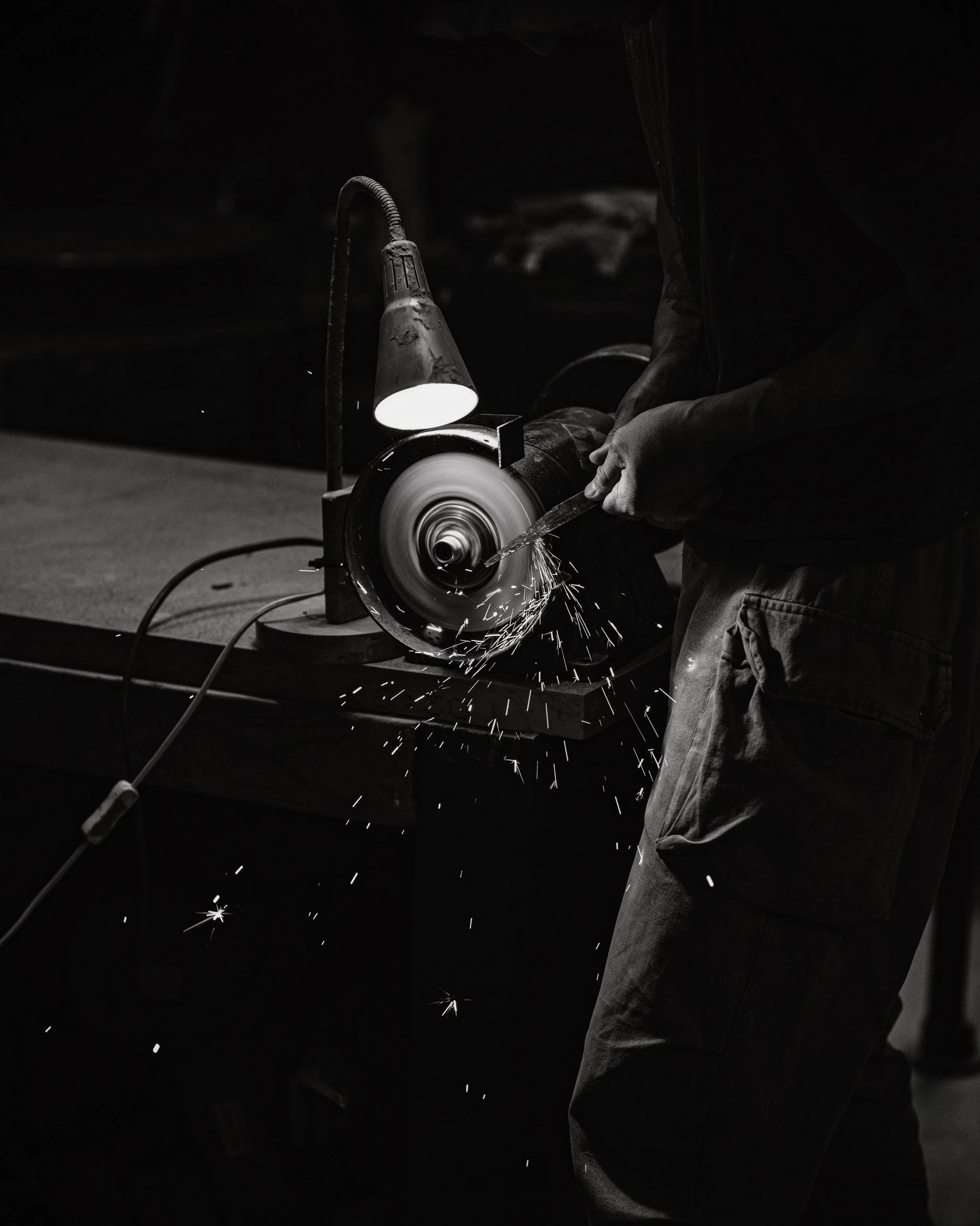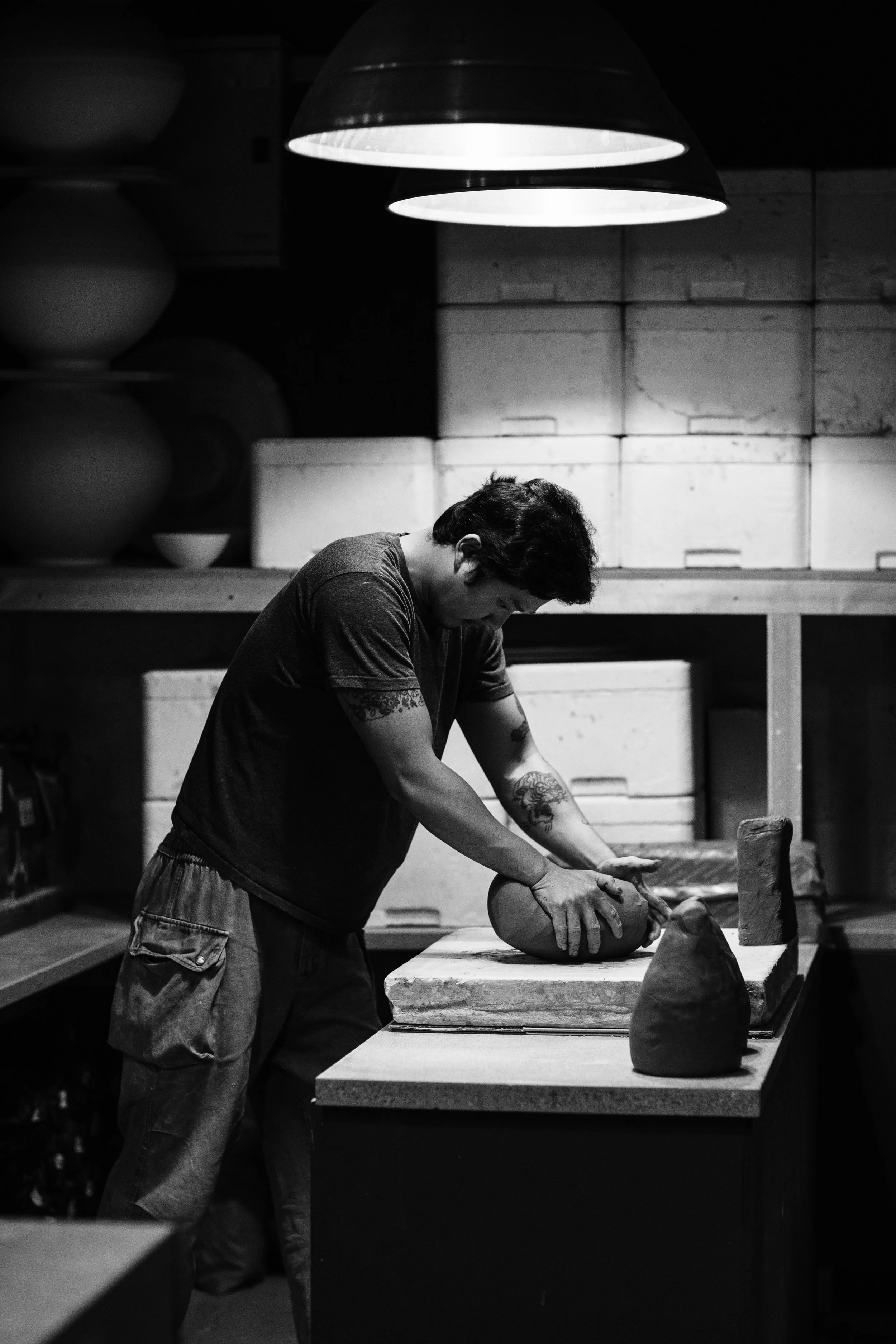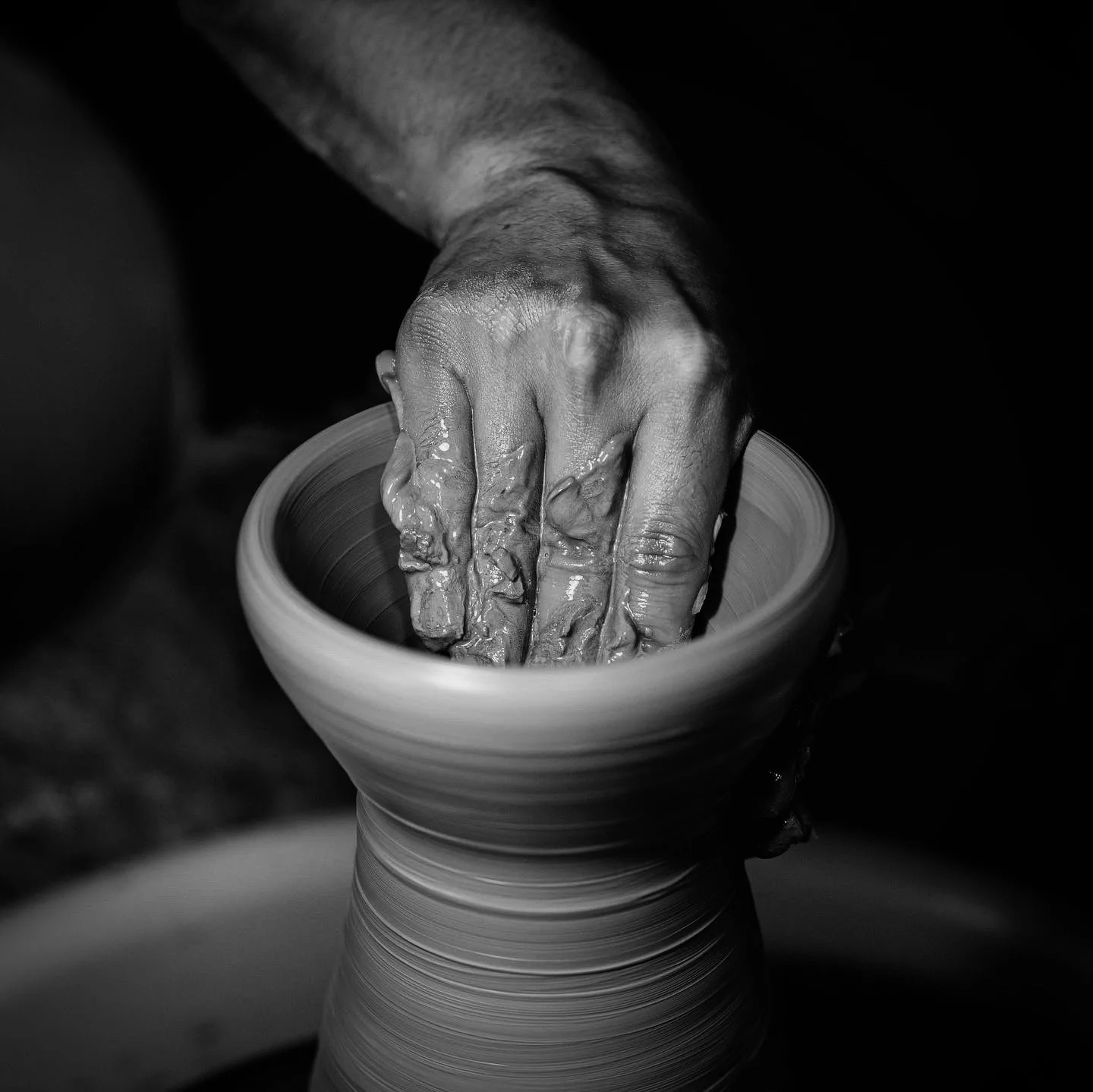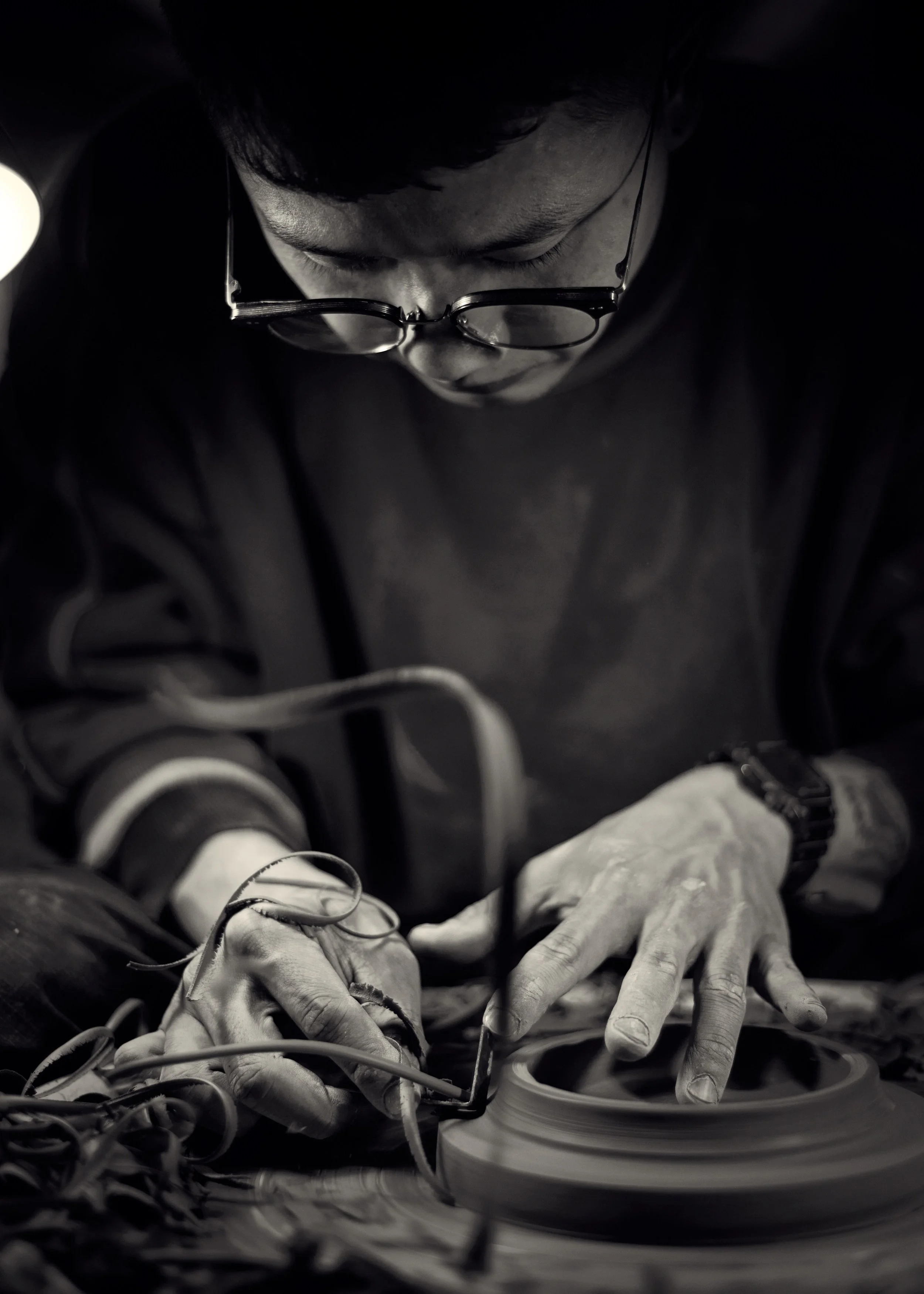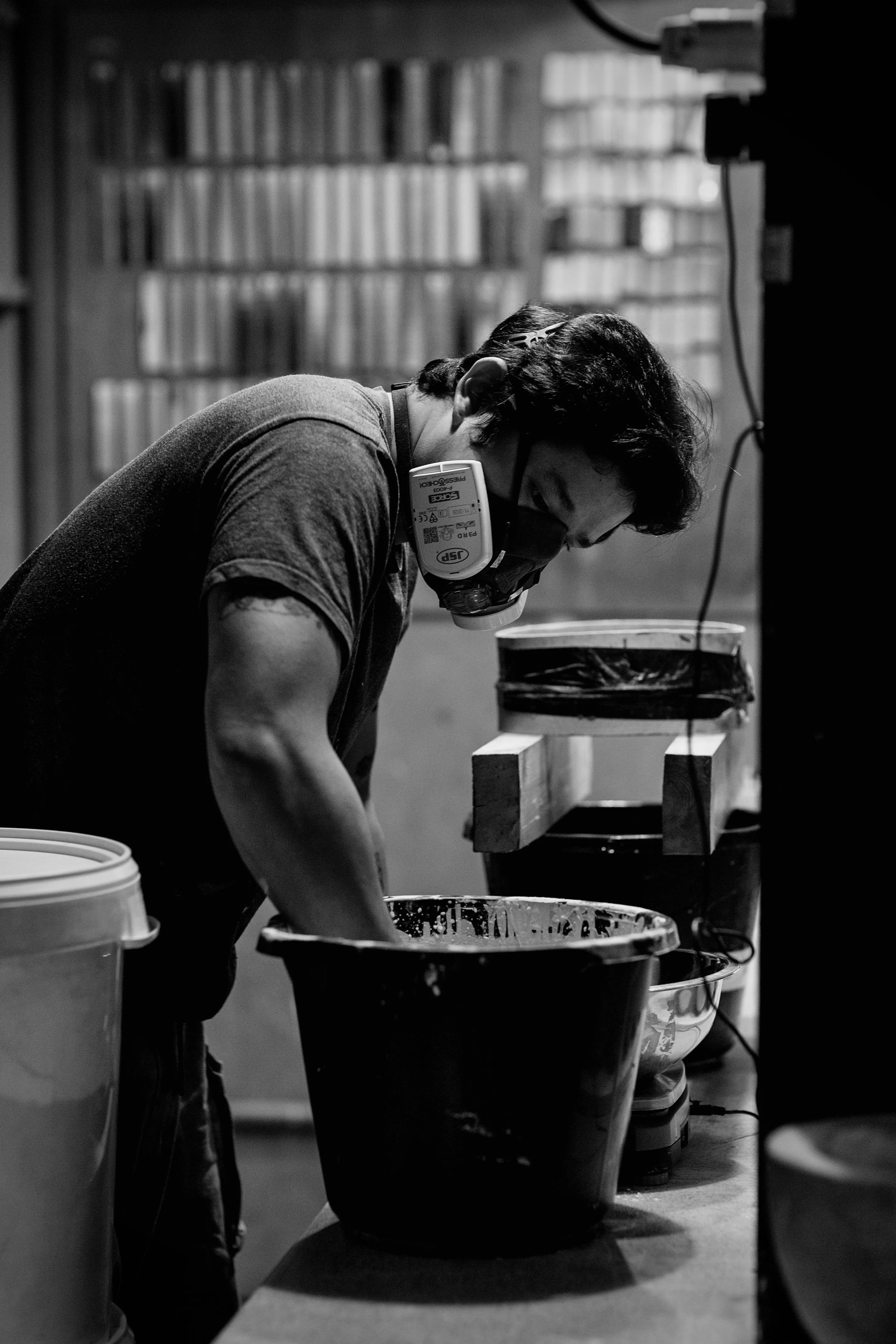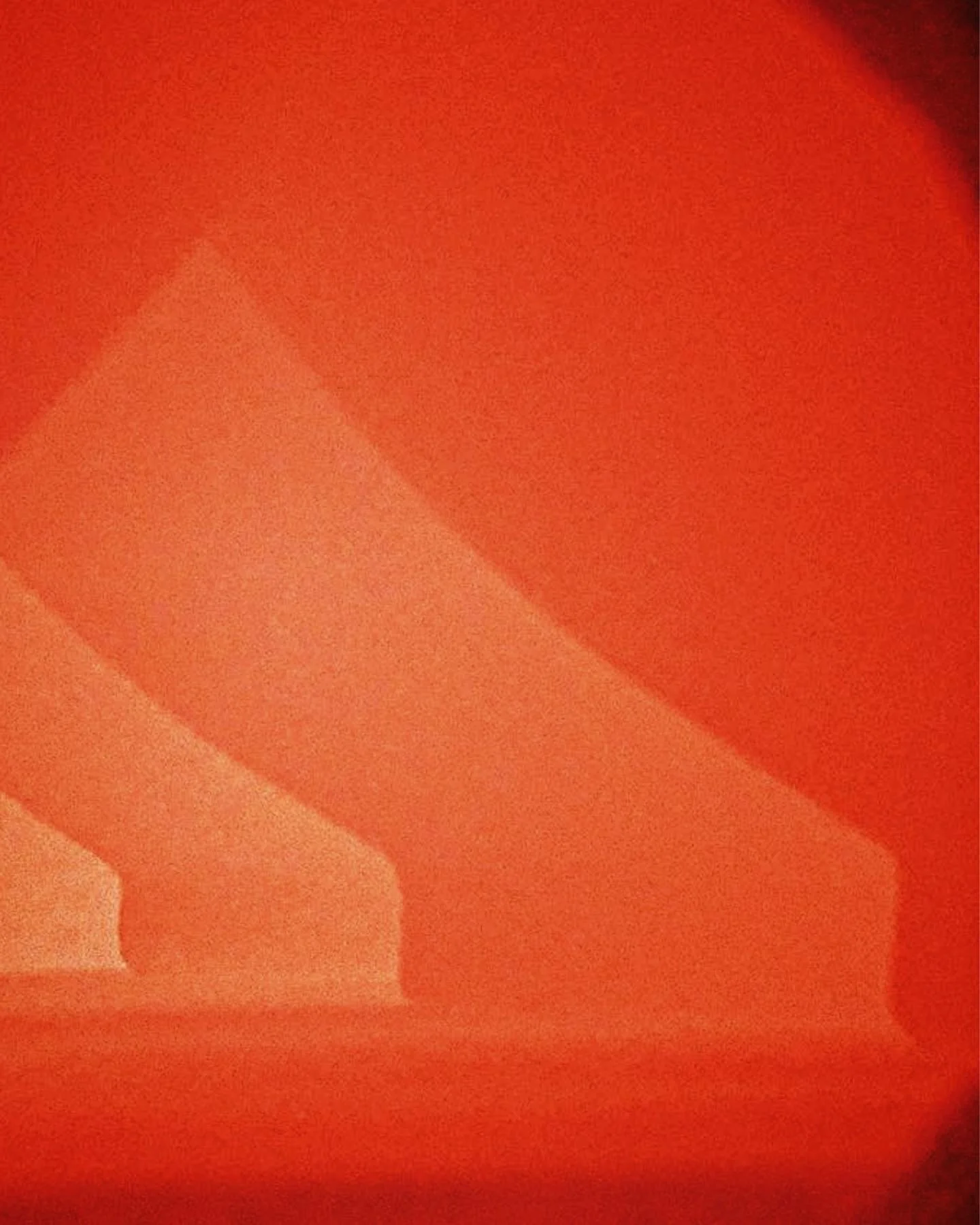1. Making tools
In Korea, there is a well-known proverb
'A true artisan never blames their tools.' This reflects the idea that crafting one’s own tools to suit their needs is an essential mindset of a true master.
2. Wedging
Clay must be wedged to remove air bubbles and make it smooth.
The air trapped inside the clay can cause the piece to crack or break during the drying process.
3. Throwing
It’s the process of placing clay on a spinning wheel, creating a hole, and then expanding it to form space. It is this empty space that we utilize.
In essence, ceramics are not defined by the lines of the clay, but by the voids within. The life of a vessel changes depending on what fills that space.
5. Turning
When shaping objects with wet clay, if the base is not made thick enough, warping often occurs during the drying process.
This step involves carefully refining the thick base after the clay has dried to a suitable level, ensuring the thickness is even and the shape remains intact.
4. Drying
The piece must be flipped and dried evenly on both the bottom & top. Cracks typically occur due to differences in drying rates, which create tension within the clay.
6. Trimming
As clay dries and is fired above 1,265°C, any unrefined edges can become dangerously sharp. True design isn't just about aesthetics—it must prioritize usability. In fact, the refinement process may be even more crucial than the initial shaping and carving.
7. Making glaze
Many ceramic products achieve an unnaturally high level of durability by incorporating animal bone ash or lead into their glazes. However, rather than prioritizing sheer material strength,
I focus on nature, life, and user safety. That’s why I create and use my own glazes, ensuring they align with these values.
8. Glazing
When a glassy glaze is applied to a clay structure and fired, the spaces between the clay particles become more densely sealed. This process enhances durability and ensures the piece is safe and hygienic for use as tableware.
9. Firing
Clay is the only material that fire cannot destroy. The higher the temperature, the stronger and denser it becomes. Clay fired at over 1,260°C achieves a high density, creating an environment where bacteria cannot survive. This is why we use fired clay for applications like sinks, toilets, bathtubs, and tableware. Due to its heat-resistant properties, clay is also utilized in the construction of spacecraft.
The end of journey
After a journey that takes 7 to 10 days, the clay is finally reborn as ceramic. It will stay by your side for a lifetime, accompanying you as you share delicious food and drinks with loved ones, creating joyful moments around your table.
This is how
I make.
with thanks, Jun Rhee.
